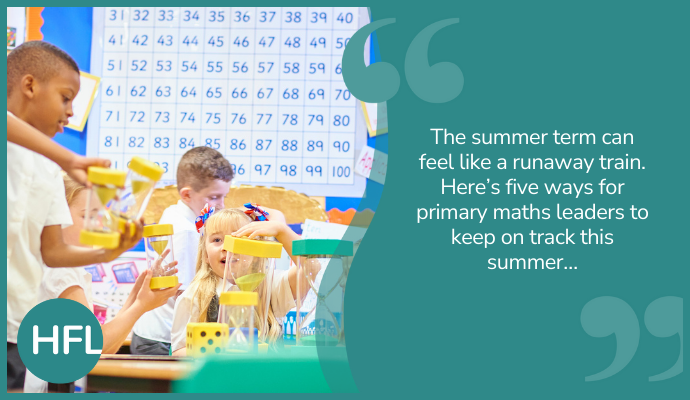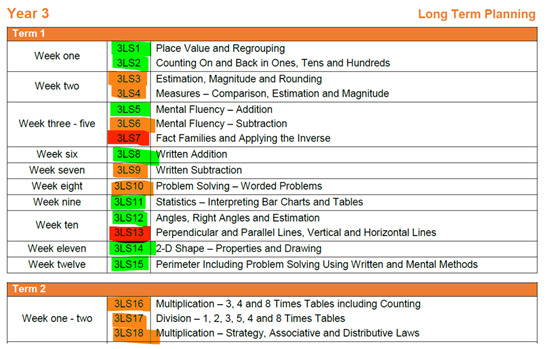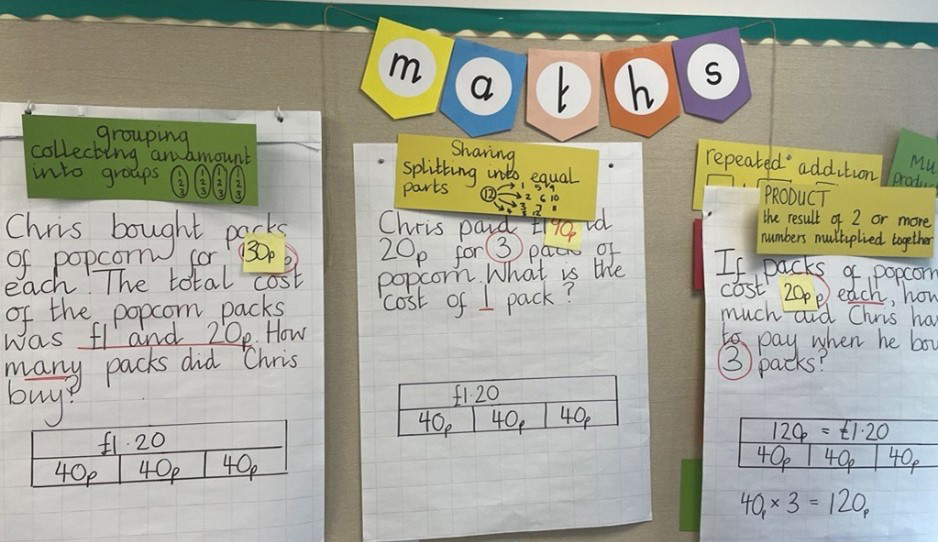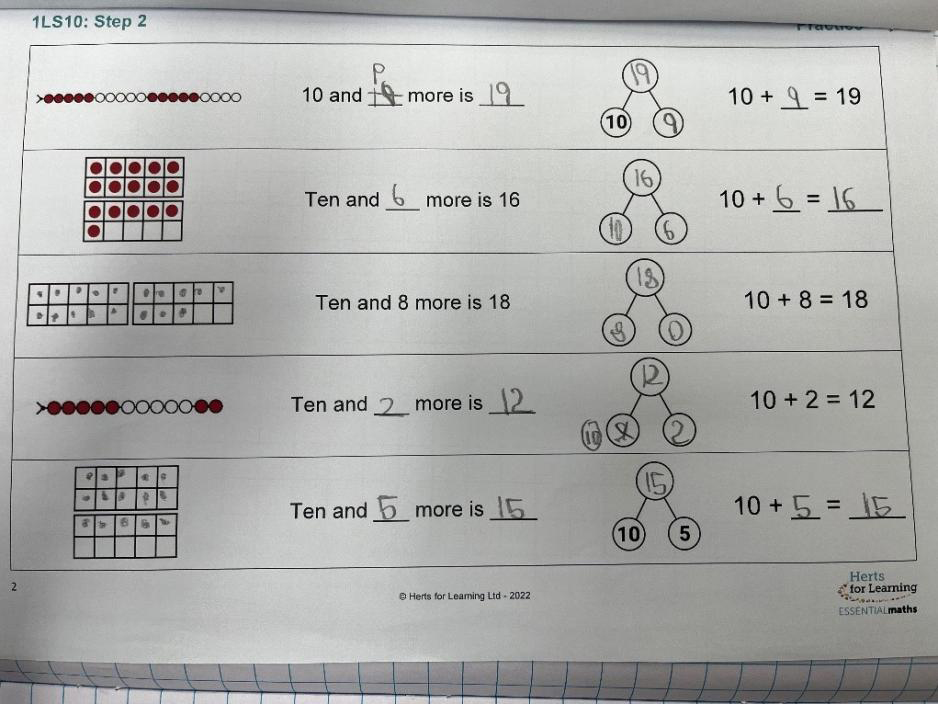
This blog was originally published 02/05/2023
Schools are always busy places to be, but the summer term can sometimes feel like a runaway train! Statutory assessments for multiple year groups, completing the curriculum, sports day, trips, handover…the list goes on! With all this and more going on, it can feel like the hard-won progress towards subject leadership priorities to date can start to go off the rails. This was a key topic in the latest webinar in our ‘Leading Primary Maths’ series and in this blog, I will outline five things to consider to keep you on track this term.
1. Review curriculum coverage to maximise the summer term
With a packed maths curriculum programme of study in every year group, pacing the curriculum to balance coverage and security of learning can be a challenge. Keeping an eye on how each class is progressing through your chosen curriculum structure is something we recommend keeping a check on throughout the year. Annotating a long-term plan is one way for class teachers and maths leaders to keep an eye on curriculum progression in a manageable way:

Red: insecure for many pupils in the class
Amber: insecure learning for some pupils in the class
Green: secure for most pupils in the class
But what if time is running out and there are 10 teaching weeks left but 12, 14 or even 16 weeks of content left? Should the teacher rush through to ensure everything has been ticked off but perhaps not secured? Should the teacher to carry on and just stop when mid-July comes with several weeks of content untouched?
Working with teachers recently, the most workable solution we are finding is to prioritise the remaining content and to liaise with SLT and the next teacher to support handover for the new academic year.
To begin with, we considered, ‘What must be prioritised, taught in full and not rushed?’
When working with a year 5 teacher, we identified this was the percentages units. Fractions had been a challenge for many pupils and as percentages is a fundamental part of the year 5 curriculum, we felt it shouldn’t be rushed. It was agreed that this would become a key priority for the summer term.
Next, we considered, ‘What aspects could be condensed and moved to daily fluency?’ For this year 5 class, we identified content such as Roman numerals and reading timetables.
The key actions for subject leaders are:
- to find out whether there are year groups with pace / coverage issues, given the remaining teaching time in the summer term
- to support teachers to maximise remaining time by identifying high-value learning and using the knowledge of the class to guide decision making
- to ensure curriculum decisions are agreed and communicated to relevant teachers and leaders.
2. Keep a supportive check on year 5
With the end of Key Stage 2 assessments on the horizon, the focus in UKS2 is often on year 6 at this time of year. But what about year 5? Once SATs has passed, many teachers comment about the dynamics in UKS2 shifting. A key challenge for year 5 teachers is maintaining business as usual in terms of their maths curriculum diet.
Some year 5 teachers report that in the summer term, feeling the pressure of pupils being ‘year 6 ready’ can sometimes increase and they feel unsure how to balance the curriculum in terms of coverage vs security of learning. For those with mixed age classes for year 5 and 6, there is an extra challenge of balancing the end of primary experience for year 6, whilst balancing the completion of a packed maths curriculum programme for year 5.
Year 5 teachers, especially those in one form entry schools, can often value having 10-15min together to look at their plan for the term and to talk through any concerns now rather than voicing them in July.
3. The drip, drip, drip feeding of your key priorities
You’ve spent two terms or more driving your key priorities for maths. You can see progress is being made, the intended outcomes are starting to show, there are signs of it becoming embedded…and then the summer term hits!
With such a busy time ahead this term, big chunks of time to dedicate to developing your priorities may be lacking. But there are a few ways of stop your focus areas slipping off the agenda.
Whole staff or phase meetings may not be available, but could you borrow 10 minutes to update staff, share successes or take feedback on a specific initiative? Simple discussion points, shared in advance of the meeting, such as ‘Can you share one small thing in the last week which has worked well in your fluency session?’ or ‘What is the one thing that is the barrier for getting in your three fluency sessions a week?’ will not only support staff but allow you to maintain a subject overview in the things that matter.
Subject leaders alone can’t keep tabs on what is happening in every maths classroom all the time. This point in the year could be a really key time to refresh the minds of SLT and other allies (e.g., ECT mentors, phase/year group leaders) about the key aspects you’re targeting. They can then keep an eye on progress, share successes and identify where further support could be targeted. Any small steps you can make now to keep your key priority a focus will pay off in September when you are planning the year ahead.
4. Look for progress, not perfection
With two-thirds of the academic year behind us, it is always tempting to look at our action plans and home in on what hasn’t been secured and what is left to do. Whilst whole school, fully embedded impact may not have been secured yet, there will be specific strengths and improvements to look for.
For example, fluency sessions may not be fully in place for all classes in the exact format you are aiming for yet, but you may have seen evidence of daily counting becoming a feature in all classes.
The summer term is an ideal time to capture examples of great maths in your school whilst the walls, books and corridors are full of two terms of good practice to share. This could be simple as a photo of a working wall or a pupil’s use of jottings or an explanation. At the start of the autumn term when you are inducting new staff or ECTs, it can be hard to show what ‘good’ looks like when the walls and books are a lot emptier.
Capture great examples before they disappear:


5. Finally, if in doubt…. check the guidance!
With statutory assessments for the end of EYFS, KS1 and KS2 plus Year 1 phonics and the Year 4 multiplication check, keeping up with the finer details of the (quite literally) hundreds of pages of guidance documents is a huge task. At such a busy time, you may be ambushed in the lunch queue or at the bathroom sinks with a question about arrangements, rules or regulations. We would always advise ensuring all staff involved in any stage of the assessments have access to the relevant documents and have the opportunity to clarify any queries. It’s certainly not a very exciting part of the job but making sure everyone is clear makes for a more relaxed atmosphere for pupils and staff alike.
We can support you to support your school
Our team of HFL primary maths advisers are passionate about supporting subject leaders and members of SLT to support their staff and provide the best maths education for their pupils.
Here are just some of the ways we can support you:
- Consider joining us for the 2025/2026 webinar series, ‘Leading Primary Maths’
- The HFL Education Maths Subject Leader Toolkit is packed with templates and guidance to support all aspects of your role
- Subscribe for free to our blogs: HFL Education Primary Maths blogs
- Sign up to our free half-termly newsletter: HFL Education Primary Maths newsletter
Do get in touch with the HFL Primary Maths team with any thoughts or questions at primarymaths@hfleducation.org



